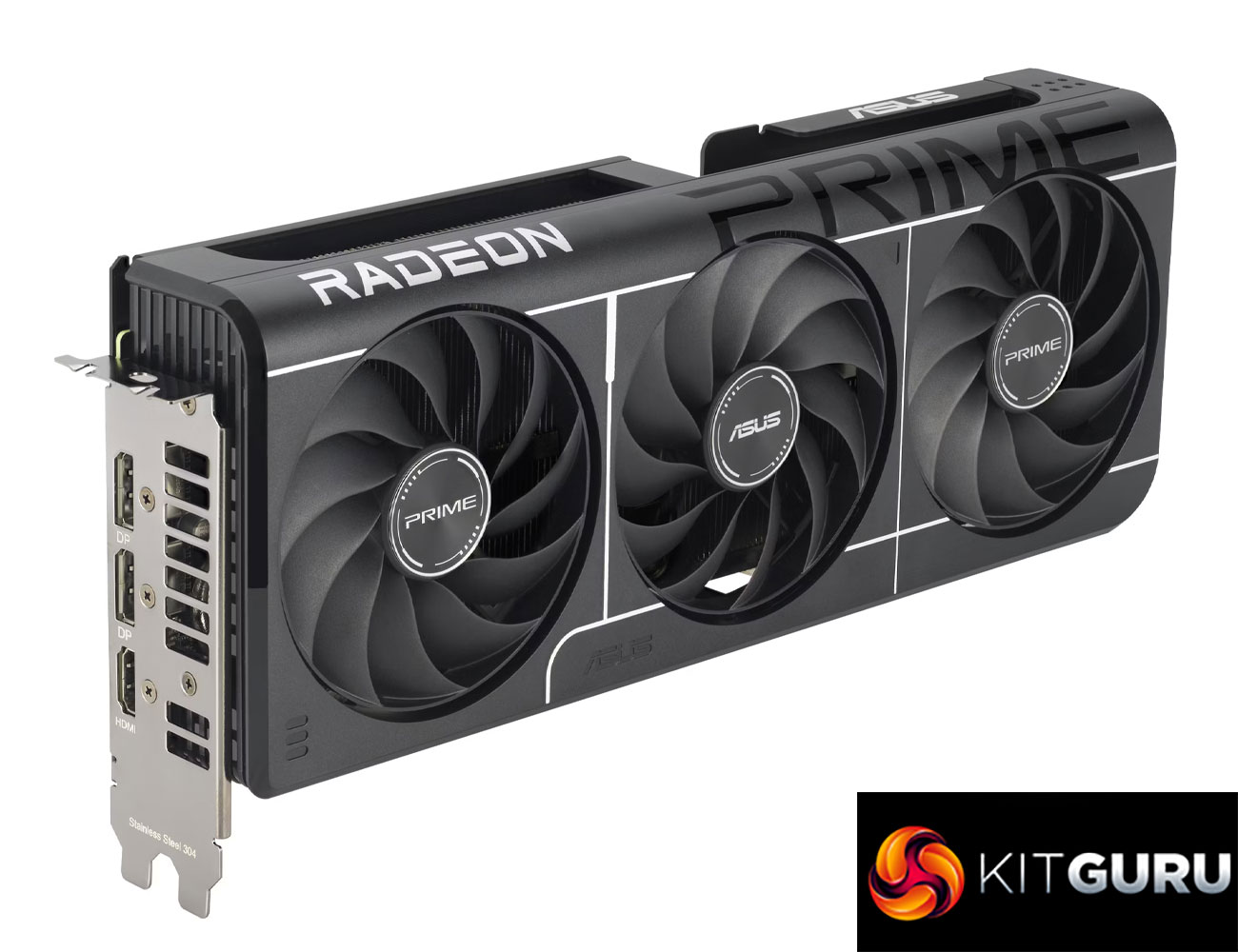A couple of weeks on from its official unveiling at Computex 2025, today we have put the AMD RX 9060 XT 16GB through its paces. Anyone shopping for a new gaming graphics card under £350 will certainly want to pay close attention to this one.
That all starts with the 9060 XT 16GB's rasterisation performance, which trades blows with the RTX 5060 Ti 16GB. On average we found the AMD GPU to be 6% slower at 1080p, while it's essentially dead level with the RX 7700 XT. I do encourage our readers to check out as many reviews as possible though, as performance versus the GeForce competition can vary dramatically from game to game, so other outlets may well find different overall margins.
It's a capable 1440p card too, though you won't be able to max out every game – some settings tweaks, or upscaling, will be required. Even then, we still hit over 60fps on average in the likes of Cyberpunk 2077 and Ratchet & Clank using Ultra/Very High settings, so it's certainly possible depending on the game.
Our testing in this review also revealed a number of occasions where having more than 8GB VRAM is an immediate benefit today, let alone two or three years down the line. Games like Horizon Forbidden West, Dragon Age: The Veilguard and the aforementioned Ratchet & Clank all guzzle more than 8GB even before ray tracing is enabled, resulting in some interesting performance dynamics. For example, while the 5060 Ti 16GB is the faster card on average, the same can't be said for the 8GB model, which is actually 7% slower at 1440p due to VRAM-related performance issues. AMD still deserves stick for releasing an 8GB 9060 XT model, despite sharing the same name, but there's no getting around the fact that a 16GB card at this price point is a real value add.
Speaking of ray tracing, this is another area where AMD has made big strides compared to RDNA 3. Several ray traced games we tested today were over twice as fast as the outgoing RX 7600 XT, with average performance better than even the RX 7800 XT in this department. It seems like the more ray traced effects a game deploys, the bigger the uplift versus RDNA 3.
However, there are still games where the RX 9060 XT 16GB can't deliver a playable experience, even at 1080p, particularly when path tracing comes into play – just look at the results in Alan Wake 2 and Black Myth: Wukong, and those were tested with Quality upscaling too! There's no denying ray tracing performance has improved hugely, but it's clear Nvidia still holds the advantage here, especially considering the increasing number of path traced games hitting the market.
I also looked at FSR 4 upscaling as part of this review, with AMD's new ML-based algorithm delivering substantial improvements to image quality when compared to FSR 3.1. I personally think the visual quality is now good enough that I wouldn't mind using either DLSS 4 or FSR 4 upscaling, but AMD still needs to improve its marketshare. More and more games have been announced to support the technology, with AMD claiming '60+' by June 2025, but Nvidia has built up a huge head-start with its DLSS library over the last seven years, so AMD has plenty of work to do to try and make up lost ground.
Power draw is also nice and low, averaging close to AMD's claimed 160W TBP in my testing. Overclocked partner cards will draw more like 180W, but we specifically test all GPUs at reference specifications for an apples-to-apples comparison. With that in mind, overall efficiency is certainly decent and another huge improvement over RDNA 3. It can't quite match the RTX 5060 Ti 16GB, which is the most efficient GPU in its class, but the difference is less than 10% at 1440p, so it's not a hugely significant factor in your buying decision.
Pricing, on the other hand, is a much more significant factor for a potential purchasing decision. With an MSRP of £315 here in the UK, AMD has done well to undercut the RTX 5060 Ti 16GB by £85, making the 9060 XT 16GB some 21% cheaper, despite being just 6-7% slower on average for rasterisation. Nvidia has other advantages, such as ray tracing and wider DLSS support, alongside AI-based Multi Frame Generation. If you can stump up the extra cash for the Nvidia GPU, I do think it is a superior overall product for those reasons, but an extra 20% cash is quite a big jump – particularly in this end of the market segment.
The real competition comes from the 8GB 5060 Ti, priced at £349, and I have no hesitation in recommending the RX 9060 XT 16GB over that GPU. The fact Nvidia doesn't offer a GPU below £400 with more than an 8GB framebuffer really does make the decision quite easy given the way modern games are going – there are already so many games on the market today that benefit from having more than 8GB VRAM, never mind how things will look two or three years down the line, and for me that's a key consideration.
The 9060 XT 16GB looks like a solid upgrade compared against AMD's own stack, too. It's some 35-40% faster than the 7600 XT for rasterisation, often 80%+ faster when ray tracing is enabled, and the launch MSRP is basically the same as the 7600 XT's when it hit the market in January 2024. Even the comparison against the 7700 XT is favourable – the new part is just as fast for raster, much faster for ray tracing, while offering more VRAM, lower power draw, superior upscaling technology and a lower price.
We've also spoken with a couple of retailers who are expecting a good amount of supply at launch, and it also sounds like the pricing situation will be much more straightforward this time around. Unlike the 9070 XT which still can't be found at MSRP in the UK, the £315 base price for the RX 9060 XT 16GB is said to be realistic, so expect to see cards in stock around that mark. If that MSRP doesn’t materialise, however, the 5060 Ti 16GB becomes a strong alternative, particularly if 9060 XT 16GB pricing drifts within 10-15% of the Nvidia GPU. It’s certainly something to keep a close eye on.
The bottom line – AMD has a very good thing on its hands with the RX 9060 XT 16GB. Simply offering 16GB of VRAM at this price point is enough to give it a huge advantage over the competition, not to mention its solid gaming performance, much improved ray tracing and FSR 4 support. We'd expect this to sell very well indeed at the £315 MSRP.
Pros
- Strong 1080p performance, while also viable at 1440p.
- No other current-gen GPU offers a 16GB framebuffer under £400.
- Extra VRAM can make a huge difference versus the 5060 Ti 8GB.
- Ray tracing is significantly more viable than with RDNA 3.
- £315 MSRP translates to a strong value proposition.
- FSR 4 is much improved compared to FSR 3.1.
- Low power draw at around 160W.
- Offers decent, if not chart-topping, efficiency.
- ASUS Prime model runs quiet and cool.
Cons
- RTX 5060 Ti 16GB is faster and offers more features – but costs 27% more.
- Still struggles in more demanding ray traced/path traced games.
- FSR, while significantly better, lacks the near-universal game support of DLSS.
- Nvidia has the edge when it comes to AI.
KitGuru says: AMD's RX 9060 XT 16GB is a compelling addition to the sub-£350 market. If it can hold at the £315 MSRP, we'd expect AMD to shift a large number of units.
 KitGuru KitGuru.net – Tech News | Hardware News | Hardware Reviews | IOS | Mobile | Gaming | Graphics Cards
KitGuru KitGuru.net – Tech News | Hardware News | Hardware Reviews | IOS | Mobile | Gaming | Graphics Cards




